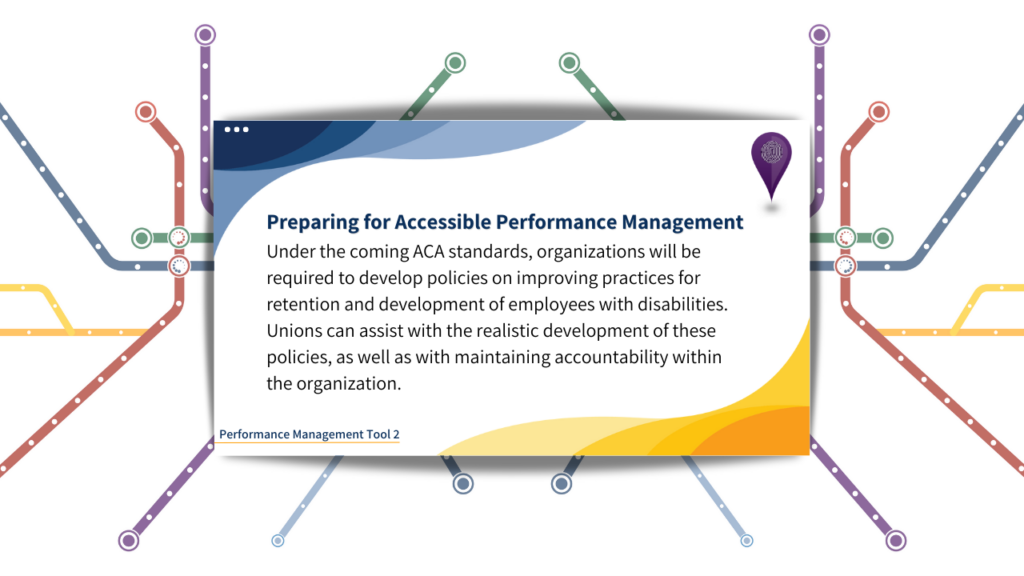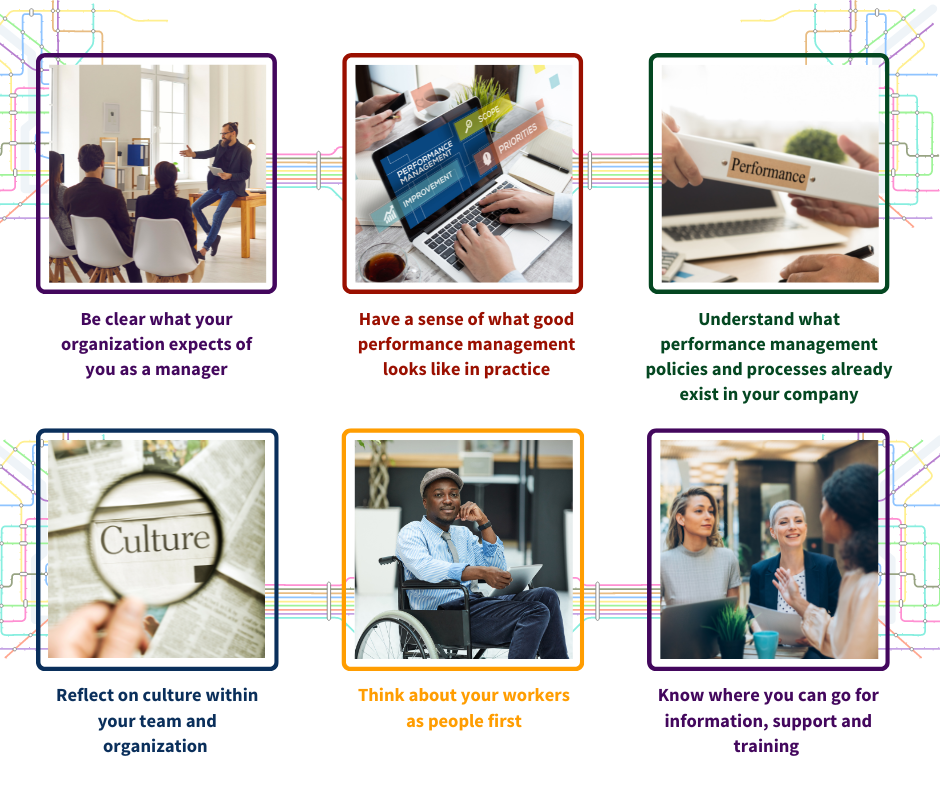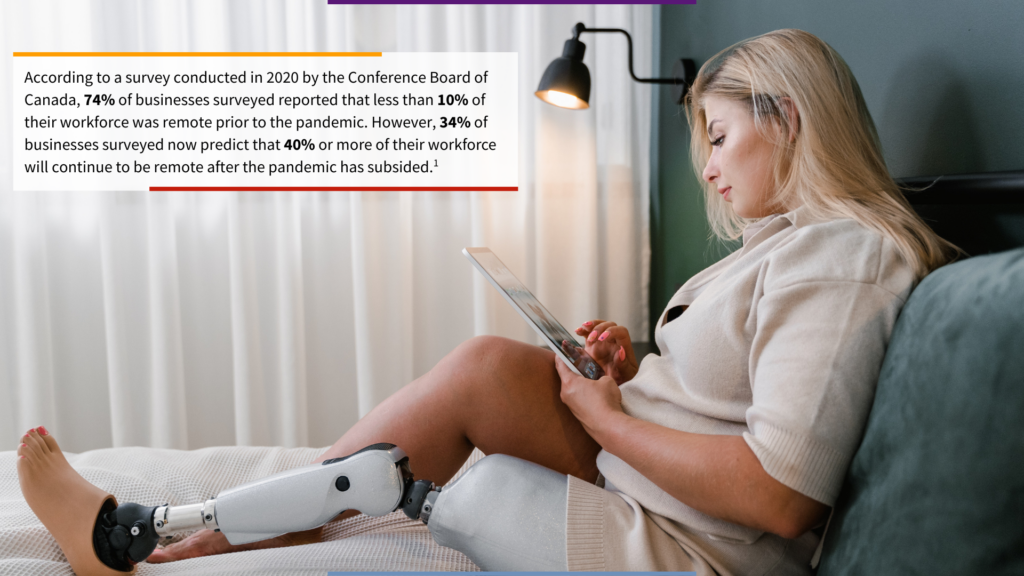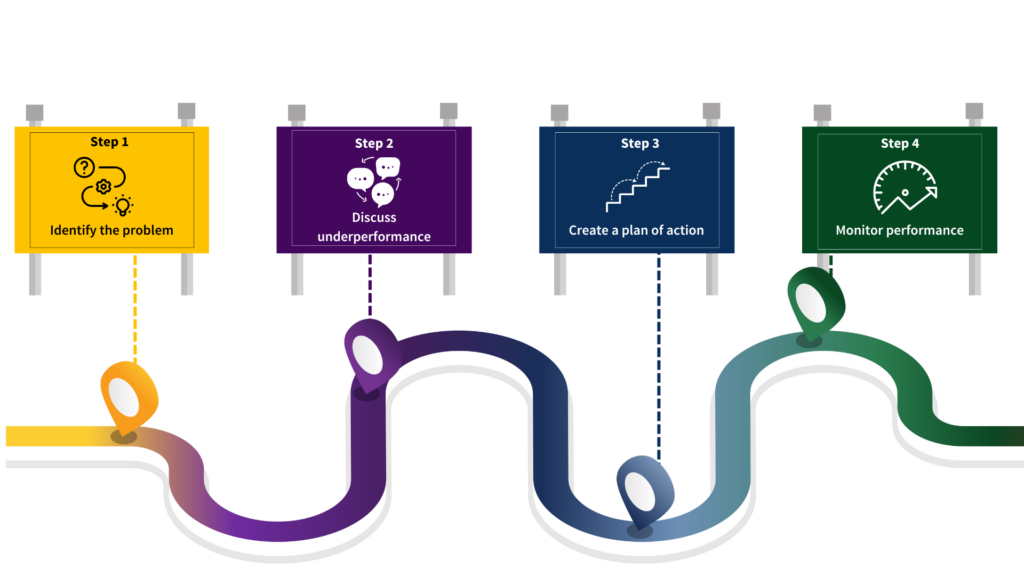Performance Management
Understanding Performance Management
Disclaimer: This is a free resource created by community and is not for sale. All tools, contents and resources are not to be sold.
Who is this for?
High priority:
Direct Line managers
Practical information:
DEI and HR Professionals
What guidance does it provide?
- Understanding the importance of time periods and check-ins for effective performance reviews for workers with disabilities
- How to give positive and negative feedback to workers about their performance
- How to implement performance improvement plans
- How to implement accommodation plans and take them into consideration during performance review
Take home points
Remember, managing performance is not an “add on” to other responsibilities of as an employer. In fact, it is an essential part of your role. The performance management process requires diligent planning to ensure it is rooted in collaboration and leads to effective implementation.
A worker’s performance management plan should not be set after workplace behaviours need adjusting or accomplishments are achieved. It must be planned and communicated during the onboarding phase.
For effective communication, ensure you are:
- Transparent about what is involved in the performance management plan
- Provide alternative forms of communication and information to make communication between employer and employee clear
- Stay flexible and open to suggestions from the employee
Preparing for Performance Management
Who is this for?
High priority:
Direct Line Managers
Practical information:
DEI and HR Professionals
What guidance does it provide?
- How to communicate with workers and set clear performance goals so there is an unbiased standard by which to evaluate performance rather than using observations of capabilities
- How to set targets, goals, and objectives, and decide when it may be reasonable to adjust these workers
Take home points
A worker’s performance can hinge upon their working conditions. Disability confident managers cultivate habits like curiosity over judgement, when developing their own understanding of how people work best.
Part of the new worker’s onboarding should discuss the probation period and set objectives which, if met, will lead to the worker successfully completing their probationary period. This period is not only for the employer to review the employee’s performance and behaviour, but also for the worker to:
- Become familiar with the organization, its working mechanisms, and workplace culture
- Develop an effective working relationship with fellow team members
- Demonstrate their competency in the role
When preparing for the performance management process, ensure you establish standards, make workers aware of standards, and monitor and measure compliance

Conducting Inclusive Performance Reviews In-Person
Who is this for?
High priority:
Direct Line Managers
Practical information:
DEI and HR Professionals
What guidance does it provide?
- How to communicate with workers and set clear performance goals so there is an unbiased standard by which to evaluate performance rather than using observations of capabilities
- How to set targets, goals, and objectives, and decide when it may be reasonable to adjust these workers
Take home points
A worker’s performance can hinge upon their working conditions. Disability confident managers cultivate habits like curiosity over judgement, when developing their own understanding of how people work best.
Part of the new worker’s onboarding should discuss the probation period and set objectives which, if met, will lead to the worker successfully completing their probationary period. This period is not only for the employer to review the employee’s performance and behaviour, but also for the worker to:
- Become familiar with the organization, its working mechanisms, and workplace culture
- Develop an effective working relationship with fellow team members
- Demonstrate their competency in the role
When preparing for the performance management process, ensure you establish standards, make workers aware of standards, and monitor and measure compliance

Supporting Workers with Disabilities During Performance Management
Who is this for?
High priority:
Direct Line Managers
Practical information:
DEI and HR Professionals
What guidance does it provide?
- How to implement accommodation plans and take them into consideration during performance review
Take home points
Offering workplace adjustments, flexibility, and accommodations are essential building blocks that help workers succeed in their roles.
After determining the appropriate accommodations for a worker, further discussions about the how they will perform certain functions of the job is needed. For example:
- Accessing the workplace/workstation
- Communicating verbally/written
- Maintaining focus, organization, or energy level
- Coping with stress or social situation
- Specific job-related technological tasks
Although accommodations are necessary in many cases to promote good performance, when a worker does not give notice of the need for an accommodation until after a performance problem has occurred, reasonable accommodation does not require that the employer to tolerate poor performance or give an evaluation that does not reflect the worker’s actual performance.
Speak with your employee on the best next steps, and ensure enough time is provided to begin the accommodation process an evaluate fairly on performance.
Managing the Performance of Remote Workers
Who is this for?
High priority:
Direct Line Managers
What guidance does it provide?
- How to manage the needs and expectation of workers with disabilities in a remote setting
Take home points
- Providing consistent and constructive feedback, holding regular performance reviews, and setting clearly defined goals – these are all fundamental to good performance management and can be carried out effectively online, over video chat, or face-to-face.
- When conducting remote performance management, move away from measuring performance on the number of hours worked or visible presence and effort, and assess on measures such as number of goal and objective achieved, and if work is delivered on time with contribution to the organization
- The key to successfully conducting remote performance management is to implement a continuous feedback loop. Remember, performance management is an ongoing process.

Unpacking Performance Discrimination and Poor Performance
Who is this for?
High priority:
Direct Line Managers
Practical information:
DEI and HR Professionals
What guidance does it provide?
- Understanding the possible impact of a disability on the behaviour of an employee
- How to differentiate between poor performance and performance impacted by a disability
- How to provide constructive feedback to support the performance of workers with disabilities
Take home points
- Stigma, negative attitudes, and stereotypes can lead to unrelated, unfair, and inaccurate assessments of people’s personal characteristics, skills, abilities, and career potential. They may also lead institutions to develop policies, procedures, and decision-making practices that exclude or marginalize people with disabilities.
- Disability confident employers provide meaningful feedback to workers with a disability. They take into account mental health concerns, plan for disability specific considerations, and ensure that the structure of the performance review and communication of information are delivered in ways that suit the worker
- When determining the difference between poor performance and disability-related performance, do not act on the basis of assumptions. Instead ask workers to help you understand what is impacting their performance and discuss the development of an individual accommodation plan if needed

What to do When Skillsets Do Not Match Job Requirements
Who is this for?
High priority:
Direct Line Managers
Practical information:
DEI and HR Professionals
What guidance does it provide?
- How to identify areas of performance concern and evaluate the best next steps for workers
- Understanding workers’ motivations, performance, skill development and potential
- How to give praise or take positive action to bring about a change or improvement in performance when required
Take home points
When addressing underperformance, follow these steps:
- Identify the problem
- Discuss underperformance
- Create a plan of action
- Monitor performance
If reasonable adjustments cannot be implemented before the end of the probationary period –you should extend their probation. If the employee’s performance does not improve after reasonable adjustments and training plans have been implemented, you may need to terminate their contract of employment.
When considering re-deployment, an employer should take into account the accessibility needs of their workers with disabilities, as well as their individual accommodation plans. Do not assign an opportunity without having an open discussion with the worker.
Before terminating or sanctioning a worker for poor performance or unacceptable behaviour, an employer must first consider whether the actions of the worker are caused by or related to a disability, especially where the employer is aware or perceives that the worker has a disability

